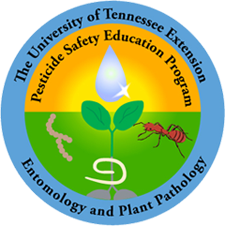What is Paraquat or Paraquat Dichloride?
Paraquat is one of the most widely used herbicides in the US for the control of weeds in many agricultural and non-agricultural settings and is also used as a defoliant on crops, such as cotton, prior to harvest. Paraquat is a safe and effective herbicide when used as directed on the label. However, for a number of reasons, suicide with agrochemicals is a tragic and regrettable social problem particularly in some less developed countries. Agrochemicals are also occasionally involved in cases of accidental ingestion, most often as a consequence of individuals breaching recommended practice by decanting product into unlabeled beverage bottles. Paraquat is the active ingredient of Gramoxone, which is used to control weeds and grasses and as a harvest aid desiccant and/or defoliant. It is a restricted-use pesticide due to acute toxicity and is for retail sale to and only for use by certified applicators. The product is toxic to humans as well as wildlife, is mildly corrosive to aluminum, and produces hydrogen gas which may form a highly combustible gas mixture in the presence of aluminum. It is commonly used as a burn down product, to control grass cover crops or volunteer cereals, and may provide control of perennial and annual broad-leaf weeds.
On March 8, 2019, the Environmental Protection Agency (EPA) announced the availability of required training for certified applicators who use products that contain paraquat dichloride (also known as paraquat) as an active ingredient. According to the EPA announcement, the reason for these new restrictions is to help reduce accidental ingestion (a single sip can be fatal) and other exposures to the product. The announcement indicated that since 2000, 17 deaths have been caused by accidental ingestion of paraquat. Many of these deaths resulted from people illegally transferring the pesticide to beverage containers and the victim later mistaking it for a drink. In addition to the deaths by accidental ingestion, since 2000, three more deaths and many severe injuries have been caused by the pesticide getting onto the skin or into the eyes of those working with it.
Products that contain paraquat dichloride as an active ingredient may be known to growers under many trade or brand names, e.g., Gramoxone, Firestorm, Helmquat, and Parazone.
The best advice still remains: read and follow the label directions on the product you are using, keep product in its original packaging, and never put product in any type of food container, especially a drink container.
Companies are required to have newly labeled product in the market after November 12, 2019; some may produce and sell newly labeled products before that date.
New training is being developed to address:
The Closed-system Requirement – As of December 31st of 2020, paraquat registrants will no longer be able to distribute or sell paraquat products in container less than 120 gallons without closed systems for removing product from the original container, any subsequent transfer of the product, and complete removal and rinsing of the product container. However, dealers and distributors will be permitted to continue to sell paraquat products that do not meet the closed-system requirement until their stocks run out.
and
Jar Testing – Tank-mix compatibility testing, aka jar testing, is prohibited. Users are advised to check the product’s website for a list of products that have been evaluated for compatibility.
Applicators who have already completed training are still compliant for three years from the time they completed the original training – they do not have to take the updated training until their three-year renewal anniversary.
Remember to always follow the label directions of the product you are using; the label is the law.
When purchasing the newly labeled product:
- Product may ONLY be mixed, loaded, or applied by certified applicator who has successfully completed the paraquat-specific training before use.
- Application “under the direct supervision” of a certified applicator is NO LONGER allowed.
- Training must be repeated every three years.
The requirement for training is only one of several actions the EPA has taken to prevent poisonings with new label changes including:
- Restricting the use of all paraquat products to certified applicators only.
- Certified Applicator Statement (for mixers, loaders, and applicators).
- Clarifying toxicity in English and Spanish language formats.
- New graphics and statement on the label:
- “DANGER—ONE SIP CAN KILL” and skull and crossbones symbol on the container.
- A “product package safety requirements sticker” affixed to the container.
- A “counter card” reiterating the same important warning information to be distributed with every container.
- Plans for closed system packaging for containers less than 120 gallons.
It is also important to note that:
- The EPA is allowing the sale of paraquat that is already in the channels of trade, so some paraquat sold this growing season may NOT have the new training requirement on the label.
- If the new training requirement is listed on the label of the purchased product, you MUST complete the training.
- Growers who currently have a supply of paraquat that DOES NOT have the new labeling listing the required training ARE NOT required to complete the training.
- Pesticide registrants will submit label changes and new product registrations for the closed system packaging by March 30, 2019, and will have 12 months from EPA’s label approval date to adopt the closed system packaging
Additional information can be found on EPA’s site.
Another link to the online paraquat training may be found here: Paraquat. You will need to create an account.
PERC has produced a factsheet concerning paraquat safety and may be found here.
